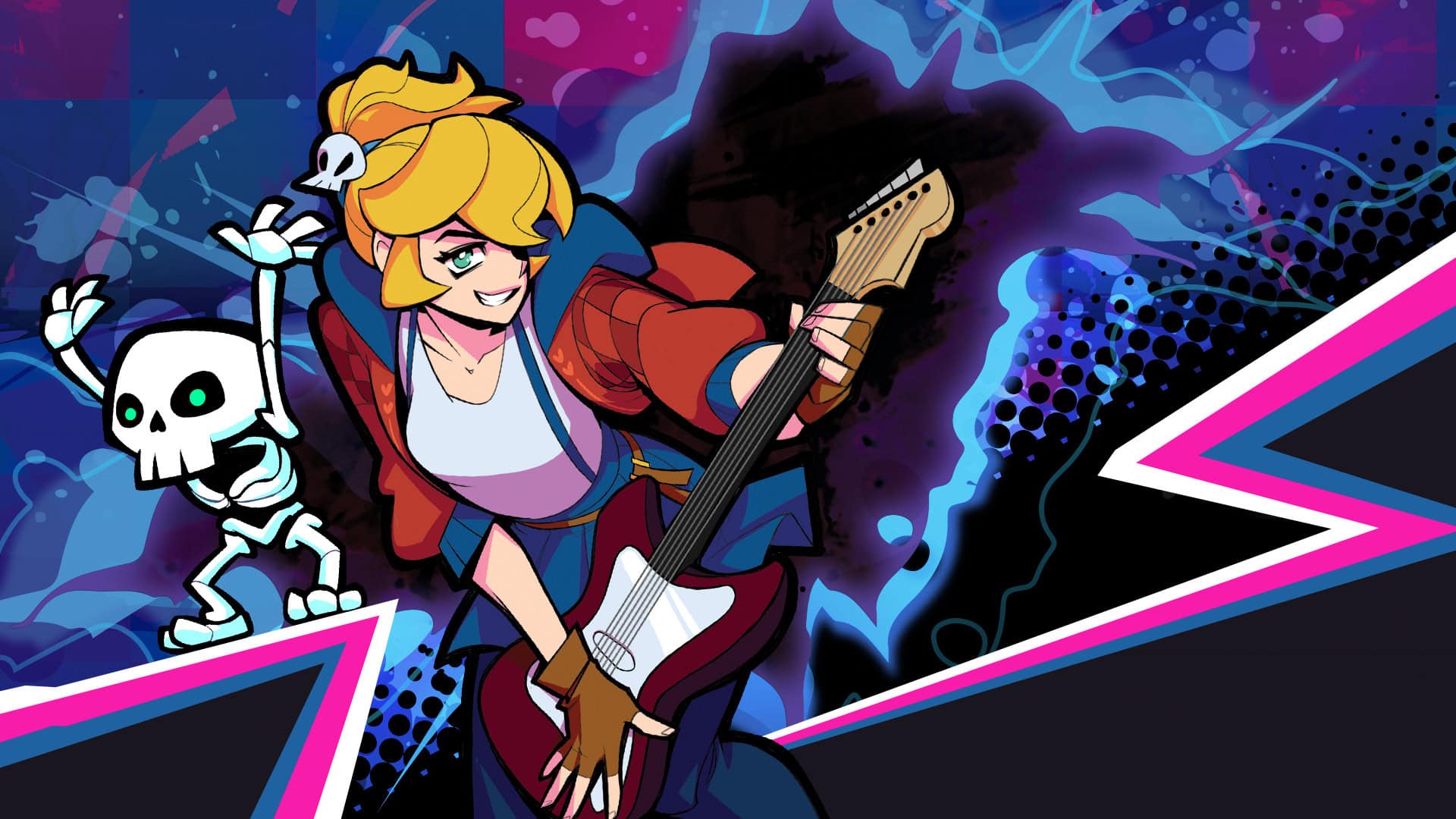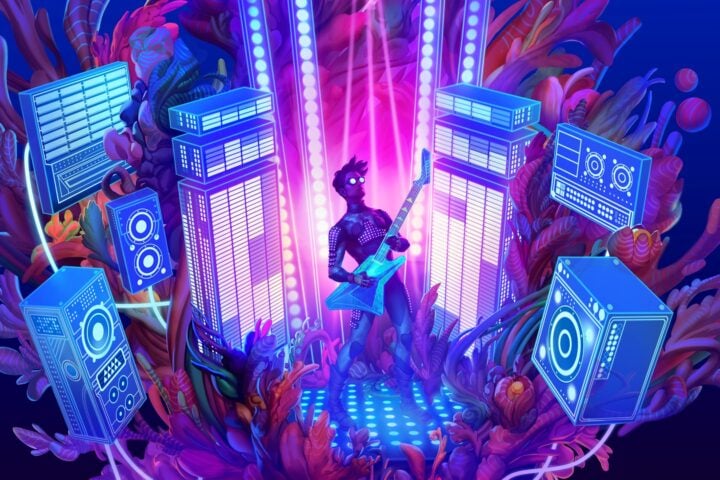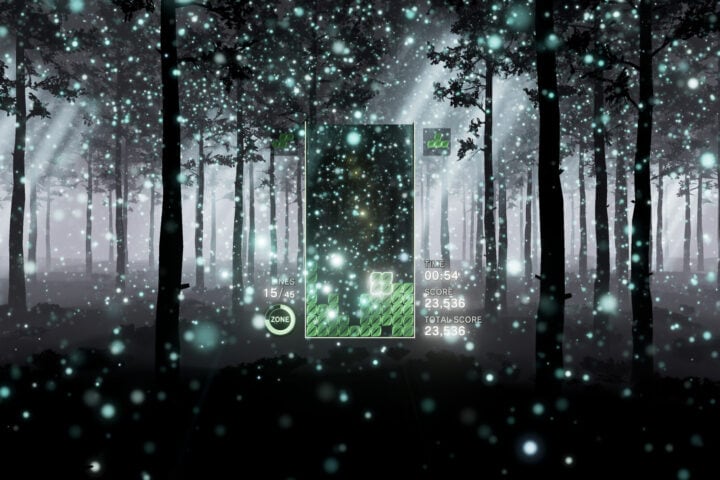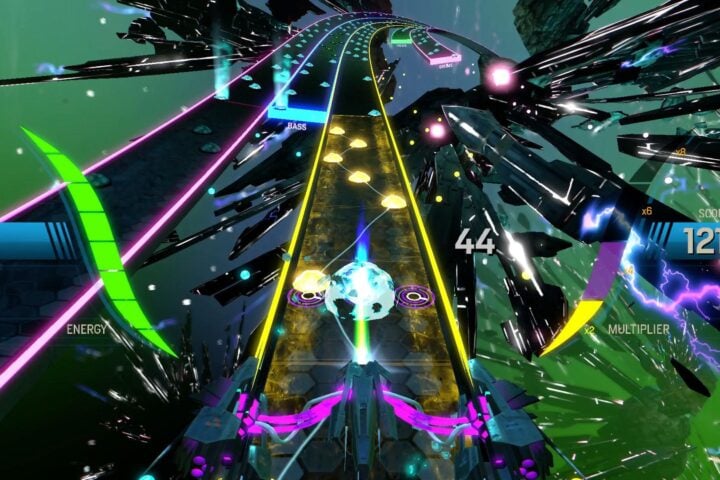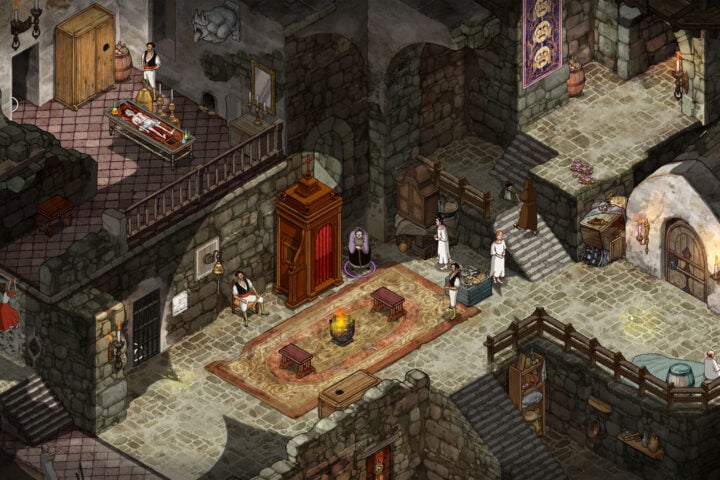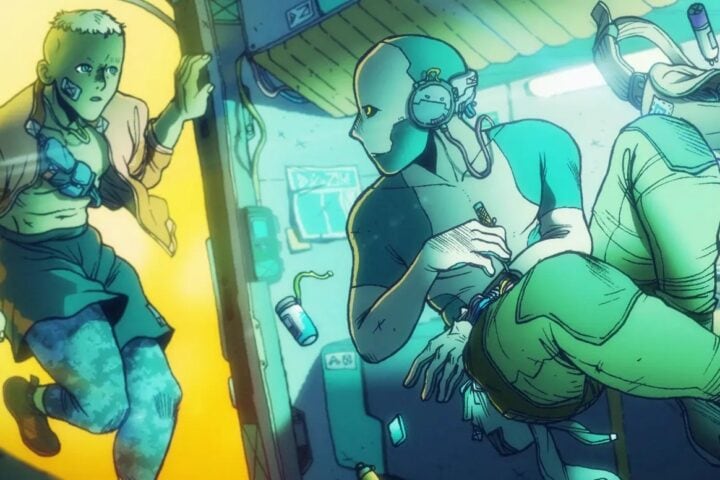Everything is about the rhythm in Rift of the NecroDancer, a genre-shifting follow-up to 2015’s Crypt of the NecroDancer. That’s true whether you’re flipping burgers in a WarioWare-style minigame, closing an interdimensional rift by syncing each strum of a magical guitar to the movements of a demonic army, or going mano a mano with skeletal sorcerers in boisterous boss battles that suggest a gene splice of Punch Out! and Let’s Dance.
As was the case in Crypt of the NecroDancer, rhythm infuses every action here. The key difference is that whereas the prior game did so within the context of what was largely a roguelike, Rift of the NecroDancer does so as a traditional rhythm game in which you select songs and match beats to on-screen notes. That leaves the developers free to modulate other areas, namely the plot and the way in which it presents those notes.
The game’s hero, Cadence, and her friends, as well as the titular NecroDancer, have all been sucked through portals into our world, and must find a way home before all the humans around them are transformed into zombies and other such ghouls. Each of Rift of the NecroDancer’s 30-plus songs speak directly to Cadence’s experience in the moment, whether it’s an uptempo rock or metal track as she tries to cheer an ally up or a slower, moodier bit of jazz or funk when she’s trying to help her friends break out of the blues, or to regain their soul.
Where the game most stands out is in its approach to rhythmic combat. Like many other games in this genre, icons move along a visible track of three lanes toward a meter at the bottom of the screen. Then, when the icon overlaps the meter, generally along with the beat of the song itself, players need to press the button corresponding to that lane. However, instead of using bland icons—a la Theatrhythm or Persona 4 Dancing All Night, or pretty much every other game in this genre—each icon in Rift of the NecroDancer is represented by an animated monster.
These monsters all have their own attacks and defenses, so an armadillo needs to be hit in triple-time, while a giant skull explodes and leaves behind two smaller skulls to immediately dispatch. It makes sight-reading each song an even more engaging affair than usual, especially at the harder difficulties, where you’ll not only need to quickly differentiate between the color of a monster (which indicates how many beats it may take to slay) but with its shadow, which indicates whether it’s moving on, off, or against the tempo. For good measure (pun intended), the game throws in trap tiles that may further obfuscate how enemies close the distance.
Though you can beat the story mode in five hours—or less, if you nail every song on the first try—you’ll want to tackle higher-intensity difficulties or modified challenges that test specific skills given how addictive the music and gameplay is. This may be mostly for bragging rights on the in-game leaderboards, as the gems earned by completing songs on various difficulties and modes only unlock harder difficulties, but the songs are compelling enough that they’re their own reward. The game also uses its unique icons to build a seemingly endless remix mode, wherein each playthrough of a song has a randomized arrangement of monsters, challenging you to sight-read a score that’s constantly wriggling around in a dizzying array of colors.
For those struggling to stay on the beat, the comic plot provides plenty of opportunity to catch your breath between songs, and though it could stand to do a better job reintroducing characters from Crypt of the NecroDancer (especially from the DLCs), the game also lands solid points about the importance of moving to the beat of one’s own drum. Negative emotions may not be so easily dispelled for us as they are with Cadence’s magical guitar, but music can help us to motivate ourselves, making this a feel-good game in more ways than one.
This game was reviewed with a code provided by Brace Yourself Games.
Since 2001, we've brought you uncompromising, candid takes on the world of film, music, television, video games, theater, and more. Independently owned and operated publications like Slant have been hit hard in recent years, but we’re committed to keeping our content free and accessible—meaning no paywalls or fees.
If you like what we do, please consider subscribing to our Patreon or making a donation.

